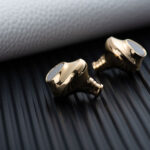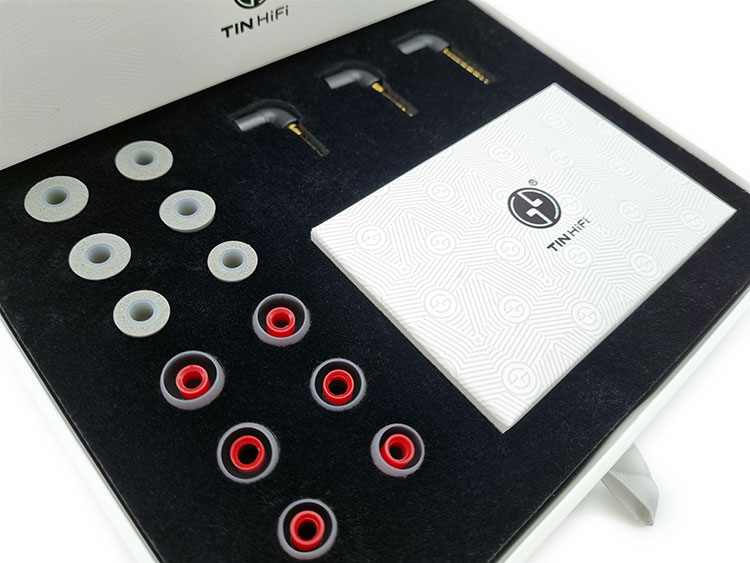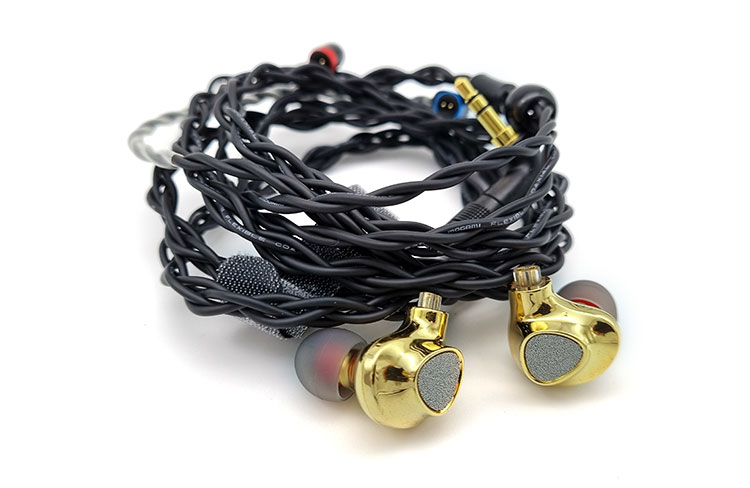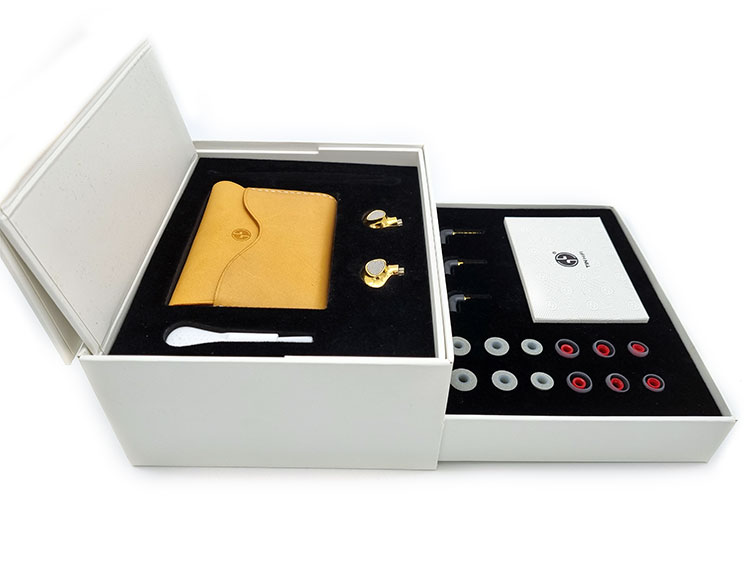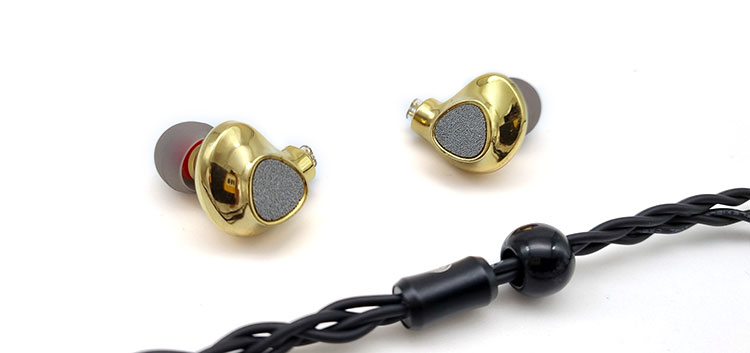Tin Hifi P2 Plus is a special edition IEM featuring an upgraded planar-magnetic transducer and a new gold-plated finish. It is priced at $620.
Disclaimer: The Tin Hifi P2 Plus sent to us is a sample in exchange for our honest opinion in this review. We thank the team at Tin HiFi for giving us this opportunity.
To read more on Tin Hifi products we have reviewed previously on Headfonics click here.
Note, this 2-page review follows our new scoring guidelines for 2021 which you can read up on here.
Tin Hifi is a critically acclaimed audio brand from Shenzhen. Needing no further introduction, the prodigious brand has established itself in the portable-audio arena as a frontier-pushing brand for well-priced offerings. Their latest IEM, the P2 Plus, is the definitive follow-up to its previous flagship, the P2.
Featuring an upgraded planar-magnetic transducer, the engineers at Tin Hifi have corrected some of the P2’s “glaring” flaws (treble pun intended) that were raised by its ardent fans. However, these successive revisions have resulted in a price tag that is twice as expensive as the P2.
With more brands such as Audeze entering the planar-magnetic IEM arena, Tin Hifi’s aggressive pricing might reflect their desire to remain the market leader in this niche segment. Regardless, it is resoundingly clear that Tin Hifi is trying to enter the mid-to-flagship market with its bespoke offerings.
Tech Highlights
The P2 Plus houses identical, 12mm planar-magnetic drivers from its younger sibling, the P2. Both IEMs share the same chassis design and recessed 2-pin terminations. The P2’s notorious low sensitivity is carried over despite attracting some controversy amongst impassioned audiophiles. Expect some resistance when pairing it with low-powered sources.
Because both products are physically identical, the P2 Plus features an ostentatious, gold-color way to distinguish both models from one another. Moreover, the P2 Plus boasts a “Mogami 2381” cable with interchangeable terminations (3.5mm, 2.5mm balanced, 4.4mm balanced).
The stealth-black colorway in the Mogami cables further offers another visual distinction between the P2 Plus and P2. The P2 does not reinvent the wheel, but it serves to improve upon its predecessor.
Design
As mentioned, the P2 Plus features the same chassis design, with sleek curves and an etched, aluminum faceplate on each side. However, each shell features 18k gold electroplating. Unfortunately, highly polished surfaces have a natural proclivity for attracting hairline scratches and pitting in the long term.
The P2’s satin finish is more practical, circumscribing the aforementioned problems. Aesthetically, its ostentatious appearance is not my cup of tea, but your mileage may vary. Nevertheless, the P2 Plus’s build is exceptional, its solid mono-body design inspiring confidence in its potential lifespan and longevity.
The nozzles on the P2 Plus each feature raised lips to ensure that the attached ear-tips remain snugly wrapped around them during use. Moreover, it uses recessed 2-pin connectors; a standard termination that allows for ease of swapping between cables.
In essence, the P2 Plus does not deviate too far from the P2’s formula, and for good reason.
Comfort & Isolation
The P2 Plus is a hefty earphone that’s noticeably heavier than your run-of-the-mill acrylic IEM. Consequentially, the added weight detracts from its long-term comfort. In less than 2 hours, soreness starts to build upon the outer ear canal
Apart from that, the P2 Plus nozzles are adequately sized, sitting in my ears tightly. During my “head-shake” test, neither shell was displaced from my ears during testing sessions.
As a planar-magnetic IEM, a pin-hole-sized vent is situated below the nozzle on each channel to displace some of the entrapped bass cascading within each chamber. However, isolation does not seem to be compromised by their presence.
During my outdoors listening tests, the P2 Plus filters out about 90 percent of ambient, and wind noise during my travels on public transport (if you’ve managed to attain a pressure-tight seal).
Tips
For testing purposes, I opted for the included SpinFit medium-sized tips. Its flexible and malleable core allows it to match the contours of my ears without any fuss. In comparison to the included silicone tips, the SpinFits reinforced core offers more stability and long-term comfort.
Stock Cable
The description that accompanies the P2 Plus on its official product page boasts about the P2 Plus’s included cable; the Mogami 2381 coaxial cable that is manufactured in Japan. Featuring a twist-and-lock interchangeable termination system, switching from balanced (3.5mm) to unbalanced (2.5mm, 4.4mm). does not require you to remove the entire cable.
The threading on the detachable termination has instructions embossed on it; when the “off” indicator is aligned with the white marker, the termination is locked into place. When the “on” indicator is aligned with the white marker, the plug is ready to be switched out.
The inclusion of all standard, termination options is a godsend for users who dislike having to switch out from one cable to the next.
Handling
The Mogami cables are quad-braided, splitting into two per channel with a cylindrical splitter with Tin Hifi’s official logo printed on it, alongside a bead-like adjustment tool. Its thick, stealth-black sheathing offers easy gripping.
However, the cables are noticeably weighty, and its lack-of-malleability hardens the process of stowing it away in its included case; roll the cables into a yarn-like ball, and you won’t be able to store it properly.
Furthermore, the inclusion of heat-shrink memory-wire, alongside the P2 Plus weighty shells, adds unnecessary strain to my outer earlobes, slowly eating into them during listening sessions that extend beyond an hour.
Apart from those slight hurdles, the Mogami cable is fit for a product of this caliber, albeit with some caveats.
Packaging & Accessories
The P2 Plus’s package is like that of its little brother, the P2. On its outer sleeve, Tin Hifi’s logo is printed on the lower-left corner of the box, alongside the IEM’s name, P2+, embossed in gold leafing in the center.
Upon removing the sleeve, the P2 Plus’s core packaging is reminiscent of a standard jewelry box, with a two-level drawer system. The top-most drawer features a premium, vegetable-tanned leather case. Look lower, and you will be greeted by the P2 Plus shells.
Other accessories include a Tin Hifi instruction manual and warranty card, official Spin-fit ear tips, ear-wax filters, a cleaning brush, and a pair of tweezers for replacing the ear-wax filters.
At the bottom-most drawer, the rest of the P2 Plus’s generous accessories package can be found here. The Mogami 2381 cables are tightly encased in a separate, cardboard box.
Its removable connectors are neatly organized at the top in ascending order (2.5mm, 3.5mm, 4.4mm). The bottom drawer also features 2 columns of silicon, and foam ear tips in standard S, M, and L sizes.
Tin Hifi left no stone unturned in this thoughtfully conceived and enticing package. Its gargantuan smorgasbord of accessories covers almost every conceivable need and want that an audiophile would have.
Sound Impressions
Summary
During my initial listening impressions, the P2 Plus’s sound signature sounds reasonably neutral, with a light sub and mid-bass bump, albeit in varying degrees.
The P2 Plus’s mild sub-bass rumble is gentle, opting for a tempered decay that dissipates slowly without overwhelming the entire frequency band. On the other hand, its mid-bass is proportionally stronger, with a bodied, guttural punch.
Interestingly, the infamous treble glare of the P2 does not seem to be present. The P2 Plus is a darker beast overall. A Sennheiser-veil seems to be present here, favoring early-onset treble roll-off and a lifted lower-midrange to compensate for the planar magnetic transducer’s abrasive tendencies.
Even-harmonic artifacts do not seem to be deeply exaggerated, but the lower-midrange seems to be more pre-eminent about the upper-mids; my educated guess is that Tin Hifi opted for a modest lower-mid boost to avoid long-term listening fatigue.
Comprehensively, the P2 Plus’s sound can be described as such: its FR remains relatively linear, albeit with some tasteful moderations. Firstly, several tweaks were made to the low, and mid-range.
Secondly, the engineers at Tin Hifi made sure to eliminate the nasty sibilance that emerges from time to time on the P2. We will dive deeper into the P2 Plus’s sound signature in the following sections.
Timbre
By using a single planar-dynamic transducer, The P2 Plus’s presentation of sound remains coherent and consistent across the entire frequency band. The metallic, and oftentimes sterile presentation of a balanced armature, or the sluggish boominess that poorly optimized dynamic drivers carry are not present here.
Instead, the P2 Plus synthesizes the spontaneity, and assertive transients of balanced armatures, with the organic timbre of dynamic drivers. However, the P2+ seems to strongly emphasize the sonic properties of the latter. The transition from between lows-mids-highs is seamless; there are no significant valleys between each frequency band.
Texturally, each instrument’s pronounced timbre is realistically pronounced, but nothing ever stands out significantly. It is easily inferred that the engineers at Tin Hifi are reticent to push the P2 Plus beyond its limit, subduing its in-your-face approach
Harmonic overtones take slight precedence over coarser, upper-mid focused instrumentation or vocal embellishments. The warmer permeates acoustic recordings are moderately attenuated to smoothen over any upper-mid sibilance that the P2 had. Sharp and distinct incongruencies, are nowhere to be found.
Acoustical Recordings
If you have a strict preference for acoustic or classical recordings, the P2 Plus’s presentation of music can be informally described as vinyl-meets-digital, with organic warmth colliding with precision-like decay. The slightly scooped-out upper-midrange does intensify the “darker” presentation.
However, its primary focus on timbral warmth does not come at the expense of overall clarity; it simply prioritizes a gentler approach to the FR. It’s an unexpected subversion of expectations in comparison to its predecessors.
However, the lack of upper-mid presence does circumscribe its timbral capabilities when brass sections are involved in the mix. Their distinct brittleness and forwardness roll-off far too early on the P2 Plus. Thankfully, the porous quality of shrill trumpet sections is still represented realistically.
Staging
The P2 Plus’s sound stage strongly emphasizes realism over outright, headphone-like width. The lateral distancing between instruments and vocals is reasonably wide for an IEM, comparable to open-back, flagship earbuds.
The juxtaposition of its deep, mid-bass and its “fairly” neutral mid-range response helps the listener to distinguish sounds from different families of instruments, from the kickdrum to saxophone.
Audible cues remain distinct from one another, imaging being its strong suit. Its single transducer configuration sidesteps the faux, hyper-separation of multiple-driver configurations without sounding completely claustrophobic.
Dynamics
However, the P2 Plus is incredibly adept and highly responsive to sudden changes in amplitude and dynamism. Ginormous swirls of cacophonous instruments sound grandiose, its scale being captured remarkably well.
On occasion, abrupt transitions between softer and louder sections are presented remarkably well, albeit not as spontaneous or immediate as its balanced-armature counterparts.
In terms of low-end dynamics, the full-bodied bass punch is taut and deft; it is a healthy contrast that complements the dynamic interplay between each frequency band, especially in electronic music. However, the brittle, raspy tonality of cymbals or synthesizers tapers off far too early, its commanding presence missing.
Its above-average staging properties, contrasted by its responsiveness to many genres of music make the P2 Plus a highly competent IEM across a multiplicity of genres.
Click on page 2 for pairings and select comparisons


